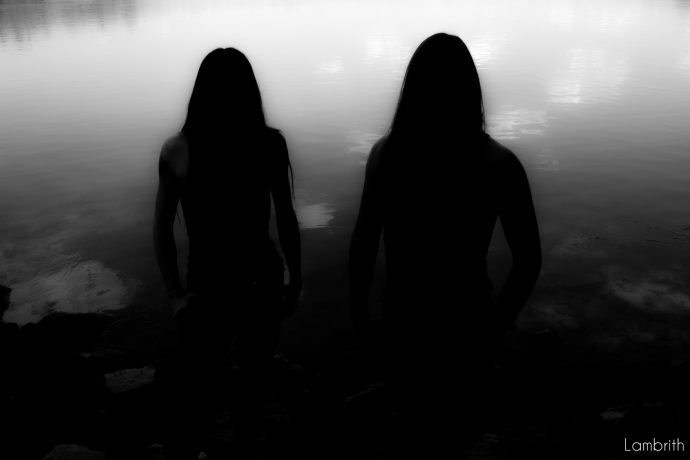
(In this Synn Report for the month of October 2020, Andy Synn assembles reviews of all the albums released by the French band Dysylumn, the most recent of which appeared earlier this month via Signal Rex.)
Recommended for fans of: Schammasch, Sinmara, Blut Aus Nord
I know, I know, this is the third time in a row where The Synn Report has zeroed in on a band playing some form of Black Metal. And, I promise, next month’s edition will break the pattern. But I honestly couldn’t let October pass by without taking the opportunity to completely immerse myself in the pitch-black back-catalogue of French duo Dysylumn, whose latest album was released earlier this month.
If it helps matters, the band’s earliest works erred much more towards the Blackened Death Metal side of things albeit with a heavy, borderline hypnotic, atmospheric presence on top of all that, so this edition of The Synn Report is still set to be strikingly different to the ones which preceded it.
But what I’m really looking forward to here is an opportunity to chart the band’s evolution from their imposing Black/Death early output through to their more atmosphere-intense, poisonously “progressive” Black Metal of their more recent work, as it’s only be understanding where they came from that we can truly appreciate what they’ve become.
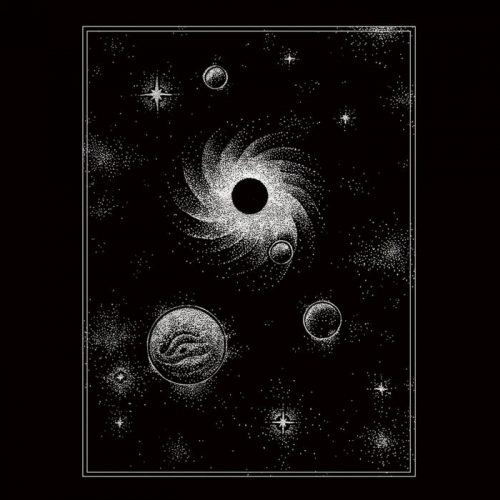
CONCEPTARIUM – 2015
Massive opener “Vide Spatial” begins with a colossal, crashing chord that immediately lays down a grim, metallic gauntlet to the listener – no quarter should be asked, as none will be given – before proceeding to deliver four unforgiving minutes of writhing dissonance and wailing melody, coupled to an impressively punchy and powerful rhythm section.
Much like early Schammasch (who would also go on to explore a more expansive and atmospheric approach in their later works) both “Vide Spatial” and “Cauchemar” balance the Black and Death Metal sides of the band’s sound in relatively equal measure.
However it must be said that the latter perhaps features a touch more technical and aggressive riff-work (along with a skein of twisted tremolo melodies) not dissimilar, at times, from the sound of Hour of Penance at their most “blackened”, an approach that carries over into “Esclave Céleste”, which once again finds a way to marry jagged, deathly rhymns and buzzing, electrified riff work in a way that refuses to be categorised as strictly Death or Black Metal, but remains an eloquent blend of both.
However, both parts of “Conceptarium” (which originally appeared on the group’s self-titled debut EP) feature a higher level of Death Metal influence, manifesting in an array of choppy, chomping riffage reminiscent of Hate, Sulphur Aeon, et al, albeit with just a little bit more bleak, brooding atmosphere added to the mix (especially in the second part), as does the ominous and oppressive “Agonie”, although here the combination of pneumatic, rippling kick drums and eerie, droning riffs gives the whole thing a strikingly doomy and discordant air reminiscent of both Decapitated and Dodecahedron.
Continuing with this more deathly theme, the punishing, precision-crafted riffs which drive “Réveil” are as red-hot and razor-sharp as anything you’ll have heard recently (and the bass work is half bad either), and really hammer home the “Death Metal” part of the band’s “Blackened Death Metal” identity.
By contrast, however, with “Astral Voyage” the band suddenly switch tactics and embrace a much more Black Metal focussed approach, with the moody, malevolently melodic riffs and ominous, nerve-jangling acoustic embellishments working in harmony to create an atmosphere of both dread and wonder, after which the dissonant ambience and poisonous melodies of closer “Nébuleuse” find the duo edging closer to the existential extremity of the Icelandic sound, in one of the first sign of the changes yet to come.
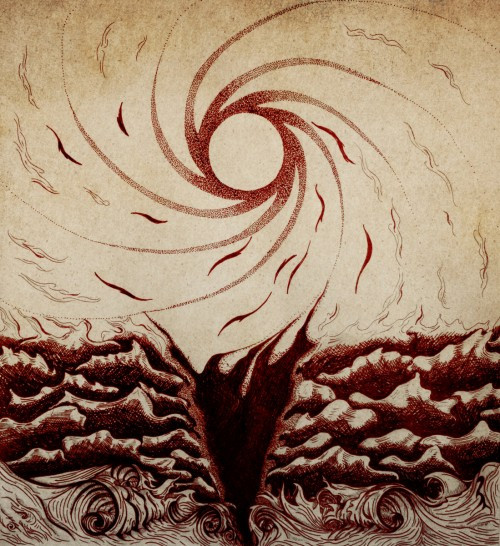
CHAOS PRIMORDIAL – 2016
Chaos Primordial, as perhaps befits an interim EP written and released between album cycles, finds the Dysylumn duo in something of a transitional state, as although the band’s core of menacing Blackened Death Metal remains as intense and intimidating as ever (indeed, if anything, the vocals are even more gruelling and gargantuan), it’s clear that they’ve already begun to embrace an even more bellicose Black Metal approach to songwriting.
This is immediately apparent both in the EP’s unorthodox synthstrumental intro as well as in the unsettling undercurrent of keening melody which underpins the rumbling riffs and grinding rhythms of the title track, but really makes its presence felt during the mesmerisingly melodic, dissonantly hypnotic strains of “Œuf Cosmique”, whose scintillating, Schammash-like vibes are topped off with a disturbing mix of harrowing howls and sub-sonic growls.
“Régénération” is, if anything, even more overtly “blackened”, its spiteful, serrated tremolo riffs and brittle, bone-jarring blastbeats erring closer than ever to the (im)pure Black Metal style of Blut Aus Nord circa The Work Which Transforms God, after which the EP’s uncanny ambient outro serves to further set the stage for the band’s next evolution.
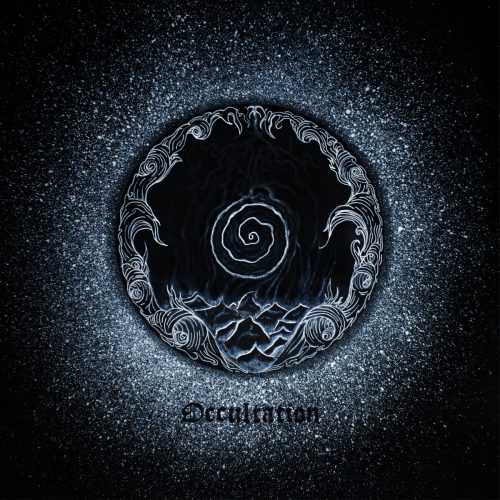
OCCULTATION – 2018
By the time they reached their second album the duo had sloughed off much of their old Blackened Death identity, as although the vocals are still delivered in a cavernous growl more reminiscent of Irkallian Oracle, Vassafor, et al, the truth is that the version of Dysylumn revealed on Occultation is both more dissonant and more melodic, more abrasive and more atmospheric… simply more Black Metal… than ever.
As the sinister, scene-setting ambience of “Oeverture” gives way to the driving drums, piercing melodies, and razor-sharp tremolo riffs of “Allégorie du Temps” this shift towards an even darker and more blackened style becomes immediately apparent, the song awash in constantly shifting layers of dismal distortion, sinuous bass-work, and rippling percussion.
The title track, however, shifts even further into the darkness, adopting an oppressively doom-laden aspect that positively pulses with menace and malevolence – all topped off with an agonising series of grim, guttural vocalisations and shot through with glimmering threads of bleak melody – which builds to a truly hypnotic conclusion built around a series of swirling riff patterns and intricate drum work.
Both “Anéchoïque” and “Psychose” continue to build upon the band’s increasingly oppressive and atmospheric dynamic, the former favouring a slow but steady build in momentum and power over the course of its nearly seven-and-a-half, Sinmara-esque minutes, the latter veering back and forth between claustrophobic passages of creeping chords and tom-heavy, almost tribal drum work and sudden bursts of anxiety-inducing blastbeats and skin-stripping tremolo.
With “Embrasement” Dysylumn return, for a little while at least, to a more dissonant and doomy form of Blackened Death Metal, albeit this is still interspersed with sporadic moments of moody blackened minimalism (and underpinned by some coldly restrained yet captivating drumming).
But it’s the climactic pairing of “Ouroboros” and “Décorporation” – the former characterised by its prominent use of ringing lead guitar melodies and thrumming acoustic chords, the latter built around some of the most compulsive, and propulsive, interplay between bass and drums on the entire record – which finds the band finally casting off the shackles of their past and embracing an unorthodox strain of Black Metal that’s clearly inspired by the introspective yet expansive work of Blut Aus Nord at their most cinematic, but which still stands proudly on its own two feet.
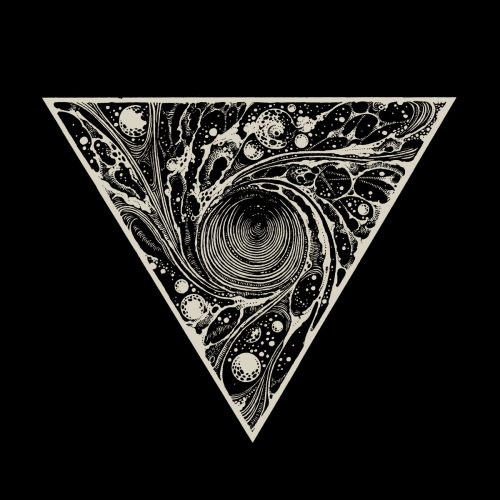
COSMOGENIE – 2020
With its three chapters – “Apparition”, “Dispersion”, “Extinction” – split across three discs, it should be no surprise to learn that the band’s third album is by far the most progressive and atmospheric release of their career.
But although its focus is clearly on summoning and shaping this inchoate, indescribable sense of atmosphere – both claustrophobic, yet cathartic, haunting, yet hypnotic – Cosmogenie nevertheless sidesteps many of the tried and tested tropes and cliches of so-called “Atmospheric Black Metal”.
Chapter one, “Apparition”, is made up of three tracks (and one foreboding ambient intro), the first of which finds the duo delving even deeper into the same bleak, cosmic waters haunted by bands such as Blut Aus Nord and Darkspace, propelled throughout by a singular sense of seething melody and cold-burning intensity, while part two is built around a swirling, whirling core of menacing distortion and mesmerising rhythms, all topped off with a croaking, cathartic vocal performance seemingly designed to send a morbid chill down even the strongest of spines, after which the third part of the chapter thunders to a close in a doomy display of winding tremolo melodies and slow-burning, gut-churning riffs.
The first part of chapter two, “Dispersion”, fluctuates back and forth between recursive patterns of rippling blastbeats and shimmering passages of doom-laden dread, underneath which a series of sinuous bass lines slip and slither, after which part two dives headlong into a nearly unrelenting vortex of writhing dissonance and blasting snare patterns which recalls the intensely atmospheric (and oppressively intense) sound of bands such as Sinmara, Almyrkvi, and Ars Magna Umbrae, only with an even more bleak and brittle sense of cruel character.
The third part of “Dispersion” is a prodigious powerhouse of doomy blackened malevolence and spine-tingling melodic elegance, equal parts claustrophobia and synaesthesia, that never fails to captivate your attention, even as it runs to nearly ten minutes in length, after which the band (smartly) blesses the listener with a short, but much-needed, ambient interlude to salve their aching senses.
For chapter three, “Extinction”, Dysylumn arguably save their best for last, beginning with the destructive discordance and nerve-jangling rhythms of “Extinction I”, before moving seamlessly into the more depressive and disconsolate “Extinction II”.
The latter’s blend of haunting ambience and hypnotic leads dips a toe into the dreaded waters of what some might call “Post-Black Metal” without allowing the band’s core character to be overwhelmed, after which the shape-shifting strains of “Extinction III”, constantly in motion, moving from roiling, percussive rhythms to searing, blasting intensity to a fearsome, doom-laden finale, deliver one last, grim gasp of blackened fury, before the post-apocalyptic ambience of the album’s otherworldly outro finally brings this epic journey to an end.
